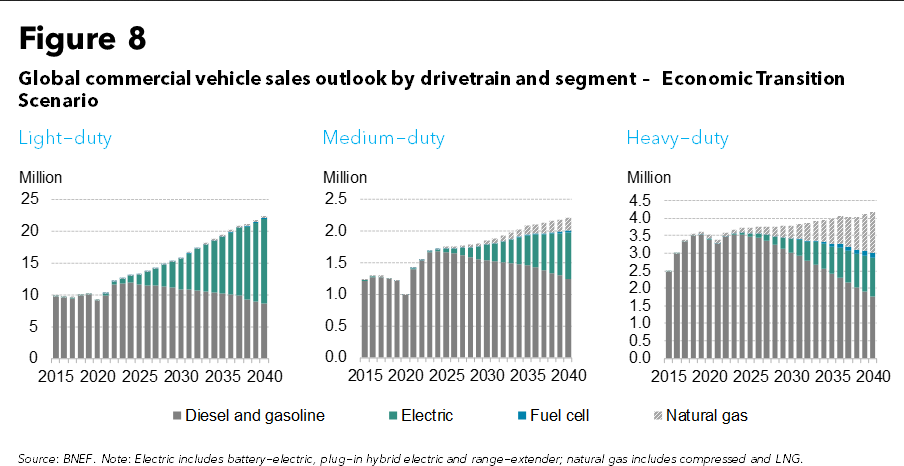GRA
Well-known member
All GCC:
https://www.greencarcongress.com/2021/11/20211109-nfi.html
https://www.greencarcongress.com/2021/11/20211106-nfi.html
https://www.greencarcongress.com/2021/11/20211109-elms.html
https://www.greencarcongress.com/2021/11/20211109-geelyfarizon.html
California’s Foothill Transit adds 13 New Flyer hydrogen fuel-cell-electric buses; largest fuel cell fleet in North America
https://www.greencarcongress.com/2021/11/20211109-nfi.html
California’s Foothill Transit has ordered 13 New Flyer hydrogen fuel-cell-electric Xcelsior CHARGE H2 forty-foot heavy-duty transit buses. This order is supported by Federal Transit Administration (FTA) funds.
This addition to Foothill Transit’s initial order of 20 fuel cell-electric buses, announced in October, now establishes North America’s largest fleet of hydrogen fuel cell-electric buses.
Foothill Transit is based in West Covina, California, operating one of the largest fleets of electric buses in America and providing fixed-route service in the San Gabriel and Pomona Valleys. . . .
The Xcelsior CHARGE H2 orders are in addition to two of NFI’s Alexander Dennis E500 battery-electric double-deck buses recently delivered to Foothill Transit.
The Xcelsior CHARGE H2 is a battery-electric vehicle using compressed hydrogen as an energy source and range extender, requiring only 6-20 minutes to refuel. . . .
SunLine Transit Agency orders 5 more New Flyer hydrogen fuel-cell-electric buses
https://www.greencarcongress.com/2021/11/20211106-nfi.html
. . . The purchase follows SunLine’s previous 2020 order for five Xcelsior CHARGE H2 buses and brings SunLine’s total zero-emission fleet to 26 fuel cell-electric vehicles. . . .
Electric Last Mile Solutions to proceed with production of Class 3 Urban Utility commercial EV
https://www.greencarcongress.com/2021/11/20211109-elms.html
The Urban Utility is a Class 3 commercial electric vehicle targeting more than 5,700 lbs. of max payload, more than 11,000 lbs. gross vehicle weight rating (GVWR) and approximately 125 miles of range. Its price positioning is expected to be competitive against ICE counterparts.
The cab-over chassis design of the Urban Utility is highly configurable, and it can be outfitted with a dry box, flat bed, stake bed and other customizable cargo options. . . .
With the introduction of the Urban Utility, ELMS will have a product portfolio spanning the $130-billion North America Class 1-3 commercial vehicle market. It will join the ELMS Urban Delivery EV, which began production in late September and is the first Class 1 commercial EV in the market.
Geely’s Farizon Auto reveals Homtruck commercial vehicle; methanol hybrid, range-extender or swappable battery powertrains
https://www.greencarcongress.com/2021/11/20211109-geelyfarizon.html
Geely Holding Group’s commercial vehicle brand, Farizon Auto, unveiled its next-generation smart new energy semi-truck, the Homtruck, with production and first deliveries planned for early 2024. . . .
The Homtruck’s architecture can carry a number of powertrain options including range extender, methanol hybrid and pure electric with battery swapping option based on government standards recently released by China’s Ministry of Industry and Technology, allowing for the Homtruck to be charged at service stations across highways in minutes rather than a substantial amount of time. . . .
Based on analysis of driver working conditions and itinerary, Farizon Auto has designed a cockpit that applies the concept of home and optimizes space to create a driving and a living area. The design includes a bathroom complete with a shower and toilet, single bed, refrigerator, tea maker, kitchen, and even a small washing machine. The ergonomic seat design and high-definition camera help ensure drivers are well-rested and well-focused, whereas an intelligent AI assistant coupled with full 360-degree cameras help to keep the driver aware of any issues around the vehicle whilst in motion or whilst stationary.
Within a growing number of selected routes, the Homtruck will be able to utilize L4 hands-off autonomous drive functions and will also introduce platooning features for longer journeys which allow trucks to communicate with each other to maintain safe speed and distance that will lower operator stress levels. Hardware sensors such as lidar, millimeter-wave radar, ultrasonic radar will be standard equipment along with 5G and V2X communication. The Homtruck will also be fully capable of being upgraded over time using Over the Air (OTA) software upgrades.

